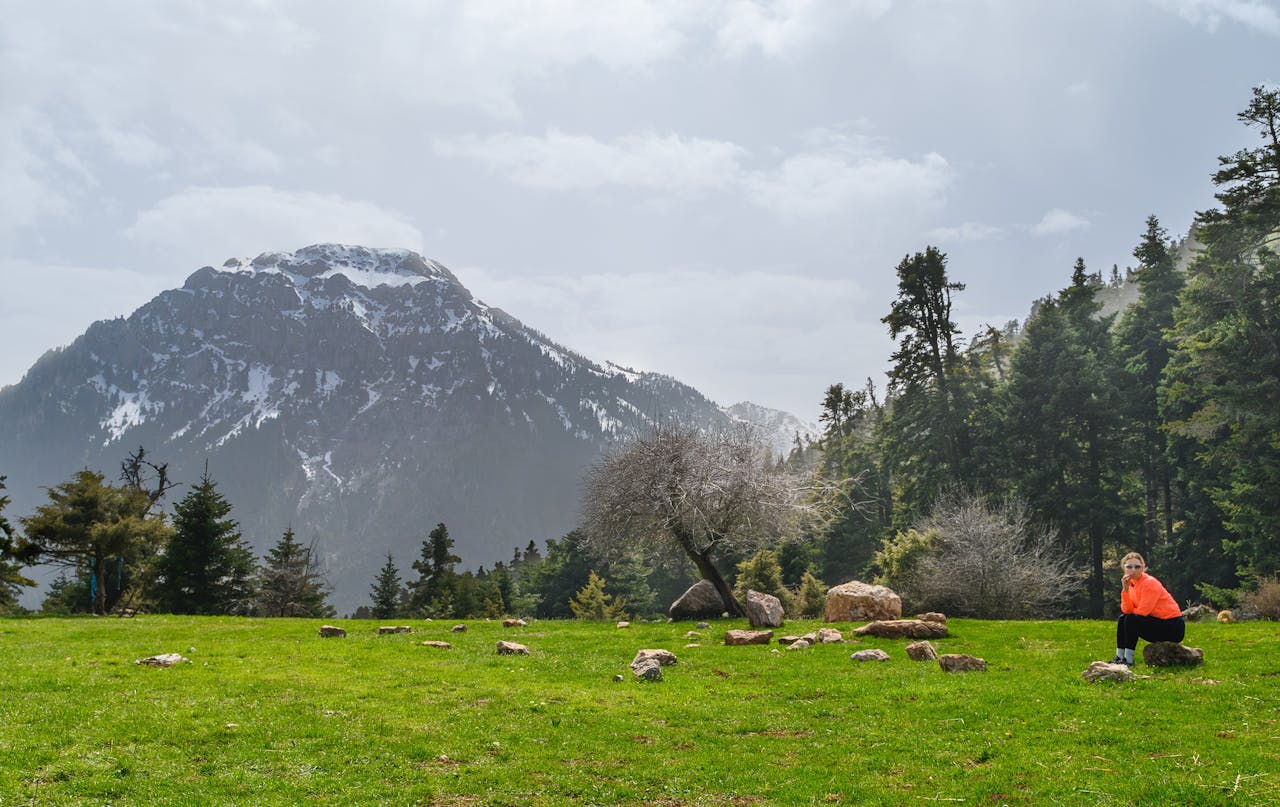Planning a trek in Nepal for 2025 or beyond? Whether you’re dreaming of standing at the foot of Everest, tracing the classic Annapurna Circuit, or wandering through the serene Langtang Valley, one thing is certain: preparation is everything. Nepal’s trekking trails are as rewarding as they are demanding, taking you through rugged terrains, dramatic altitude shifts, and weather conditions that can change in a heartbeat. The difference between an unforgettable adventure and a struggle often comes down to what you pack.
Trekking in the Himalayas isn’t about filling your bag with everything you might need – it’s about carrying the right essentials that keep you safe, comfortable, and ready for the journey. From sturdy boots that tackle rocky paths to a sleeping bag that shields you from sub-zero nights, every item in your backpack has a role to play. Think of it as building your personal survival kit for the mountains.
In this guide, we’ll walk you through the top 10 essentials for your Nepal trek – gear and items that experienced trekkers swear by. Whether you’re a first-time adventurer or a seasoned hiker aiming higher in 2026, this checklist ensures you won’t be caught off guard. Pack smart, trek light, and get ready to experience the Himalayas the way they’re meant to be explored.
1. Sturdy Trekking Boots

When it comes to trekking in Nepal, nothing is more important than what’s on your feet. The trails here aren’t just simple paths – they’re a mix of rocky terrain, steep climbs, slippery descents, suspension bridges, and sometimes even snowy passes. Without a reliable pair of trekking boots, every step can become a challenge, and blisters or sore ankles can ruin your entire adventure. That’s why sturdy, comfortable boots are the number one essential for any Nepal trek.
Key Features to Look For
- Ankle Support: Trails often involve uneven ground and steep descents. High-cut boots provide stability and reduce the risk of sprains.
- Waterproofing: Mountain weather is unpredictable. Waterproof boots (with breathable membranes like Gore-Tex) protect your feet from rain, snow, and muddy paths.
- Strong Grip: A durable outsole with deep lugs ensures better traction on slippery rocks and loose gravel.
- Breathability & Comfort: Your feet will sweat, especially during long hikes. Breathable fabric keeps them dry and prevents blisters.
Break Them In Before You Trek
One of the most common mistakes trekkers make is buying new boots just before their trip. Brand-new shoes can cause painful blisters and discomfort. Break them in by wearing them on shorter hikes or daily walks at least a few weeks before your trek. This ensures your feet adapt to the fit and minimizes the risk of issues on the trail.
Socks Matter Too
Don’t underestimate the power of a good pair of socks. Invest in moisture-wicking, quick-dry trekking socks (preferably merino wool). They prevent excessive sweating, reduce friction, and keep your feet warm in colder regions. Carry at least 3-4 pairs for longer treks like Everest Base Camp or Annapurna Circuit.
Renting vs. Buying in Nepal
Yes, you can rent trekking boots in Kathmandu or Pokhara, but it’s not recommended for long treks. Fit and comfort are personal, your own pair is always better. If you do plan to rent, double-check the condition, fit, and sole grip.
A good pair of trekking boots may feel like an investment, but they’re worth every rupee. With the right footwear, you’ll walk confidently across Nepal’s diverse landscapes and focus on what truly matters – the breathtaking views and unforgettable journey ahead.
2. Layered Clothing System
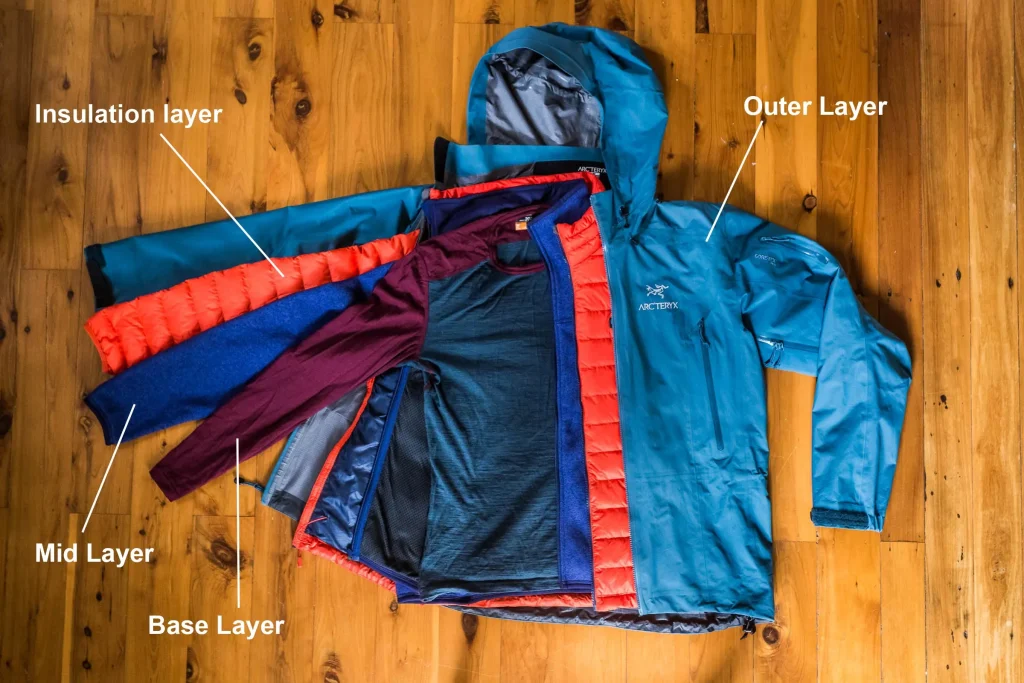
Trekking in Nepal means facing a wide range of temperatures and weather conditions. Early mornings can be freezing, afternoons may feel pleasantly warm, and evenings can drop below zero at higher altitudes. The secret to staying comfortable and safe on the trail is a layered clothing system – a flexible approach that lets you adjust your clothing as conditions change.
The Three Key Layers
- Base Layer (Moisture-Wicking):
- Directly against your skin, this layer keeps sweat away and prevents chills.
- Materials like merino wool or synthetic fabrics are ideal.
- Avoid cotton – it traps moisture and increases the risk of hypothermia.
- Mid Layer (Insulation):
- Provides warmth by retaining body heat.
- Fleece jackets, down vests, or lightweight insulated jackets work well.
- This layer is especially crucial for high-altitude treks, where temperatures can plummet unexpectedly.
- Outer Layer (Protection from Wind & Rain):
- A waterproof and windproof shell protects you from rain, snow, and strong Himalayan winds.
- Look for breathable fabrics to avoid overheating during climbs.
- Features like adjustable hoods, ventilation zips, and reinforced shoulders add comfort and durability.
Accessories That Make a Difference
- Gloves & Hat: Essential for warmth at higher altitudes. Layer thin liners under thicker gloves for extra protection.
- Buff or Neck Gaiter: Protects your neck and face from sun, wind, and cold.
- Quick-Dry Trekking Pants: Convertible pants (zip-off into shorts) are versatile for changing weather.
Packing Tips
- Stick to lightweight, compact clothing that packs easily.
- Bring at least one warm layer for nights in teahouses or high camps.
- Consider moisture-wicking undergarments to prevent discomfort during long hikes.
A smart layered clothing system allows you to adapt to Nepal’s unpredictable weather without carrying excessive weight. With the right layers, you’ll stay warm, dry, and comfortable, enabling you to enjoy the stunning landscapes without worrying about the cold or sudden rain. Trekking becomes more about the adventure and less about surviving the elements.
3. High-Quality Sleeping Bag
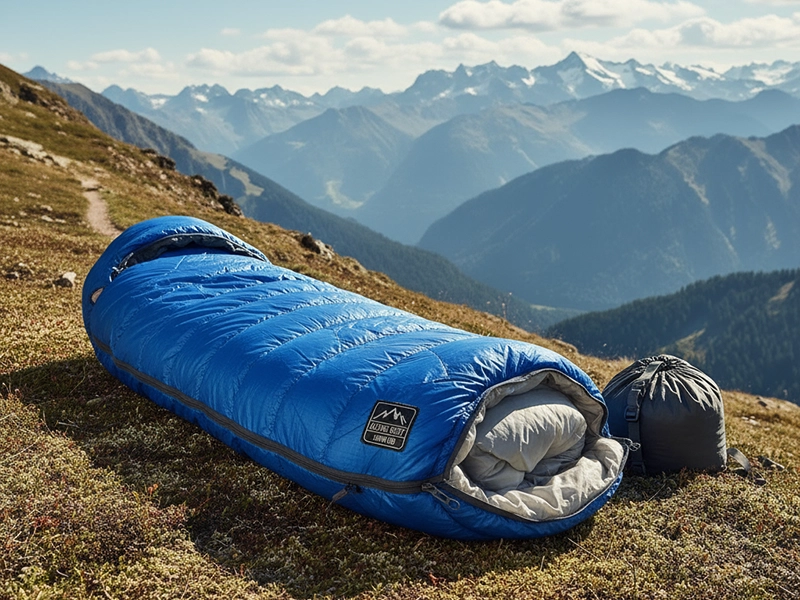
A good night’s sleep is vital on a Nepal trek, especially when tackling high-altitude trails like Everest Base Camp or the Annapurna Circuit. Temperatures can drop well below freezing at night, and poorly insulated bedding can turn your rest into an uncomfortable, shivering experience. That’s why a high-quality sleeping bag is one of the most important essentials for your trek.
Choosing the Right Temperature Rating
- For most trekking routes in Nepal, a sleeping bag rated for -10°C to -20°C is recommended.
- Even if the nights aren’t extremely cold, high-altitude winds can make teahouse rooms chilly.
- Check the bag’s “comfort” and “limit” ratings, comfort is the ideal sleeping range, while limit is the lowest temperature you can tolerate.
Down vs Synthetic
- Down Sleeping Bags: Lightweight, highly compressible, and excellent for extreme cold. Best for dry conditions.
- Synthetic Sleeping Bags: Bulkier but perform better in wet environments and are usually more affordable.
- Consider your trek route, season, and personal comfort when choosing between the two.
Additional Features to Consider
- Hood: Retains heat and protects your head during cold nights.
- Draft Collar & Zipper Baffles: Prevent cold air from entering the bag.
- Compression Sack: Helps reduce the bag’s size for easy packing in your backpack.
Sleeping Bag Liners for Extra Comfort
- A lightweight liner adds warmth, keeps your sleeping bag clean, and can be useful in teahouses where blankets may not be fully sanitized.
- Liner materials include silk, fleece, or cotton depending on personal preference.
Tips for Using Your Sleeping Bag
- Always dry your sleeping bag before packing to prevent mildew.
- Use a thin, moisture-wicking sheet underneath if staying in teahouses.
- Never place your bag directly on cold floors, use a mat for insulation if needed.
Investing in a high-quality sleeping bag is more than comfort – it’s about safety and endurance. With a reliable bag, you’ll wake up refreshed, ready to tackle another day of trekking through the Himalayas, and fully enjoy Nepal’s breathtaking landscapes without the distraction of cold, restless nights.
4. Trekking Poles

If there’s one piece of gear that often gets overlooked but can drastically improve your trekking experience in Nepal, it’s trekking poles. These lightweight yet sturdy tools are more than just walking sticks – they provide stability, reduce strain on your joints, and enhance endurance on long, challenging trails.
Why Trekking Poles Are Essential
- Reduce Knee and Joint Strain: Descending steep trails can put immense pressure on knees. Poles distribute some of that impact to your arms and shoulders, minimizing discomfort.
- Improved Balance: Uneven terrain, loose rocks, and slippery paths are common in Nepal. Poles offer extra support, helping prevent slips and falls.
- Better Posture & Energy Efficiency: Poles encourage an upright posture, engage your upper body, and can help you maintain a steady rhythm, making long days less tiring.
Choosing the Right Trekking Poles
- Adjustable vs. Fixed: Adjustable poles are versatile for different heights and terrain, while fixed poles are simpler but less adaptable.
- Material: Aluminum poles are durable and slightly heavier, whereas carbon fiber poles are lighter but may break under extreme pressure.
- Grip & Straps: Comfortable foam or cork grips reduce hand fatigue, and adjustable wrist straps improve stability.
Tips for Using Trekking Poles
- Correct Length: When standing upright with the pole tip on the ground, your elbows should form roughly a 90-degree angle.
- Alternating Technique: Move poles opposite to your legs, right pole with left leg and vice versa for balance and rhythm.
- Use for Multiple Purposes: Poles can double as support for pitching lightweight tents or creating makeshift splints in emergencies.
Packing & Maintenance
- Collapsible poles fit easily in your backpack when not in use.
- Regularly clean the tips and locks to prevent mud or snow from causing damage.
- Rubber tip covers protect poles during travel and reduce noise on rocky surfaces.
Trekking poles may seem optional, but in reality, they can transform your Himalayan trek from exhausting to manageable. They provide stability, safety, and energy efficiency, helping you focus on the scenery rather than the strain on your body. Especially on longer treks or high-altitude trails, poles become a hiker’s best companion.
5. Backpack & Daypack
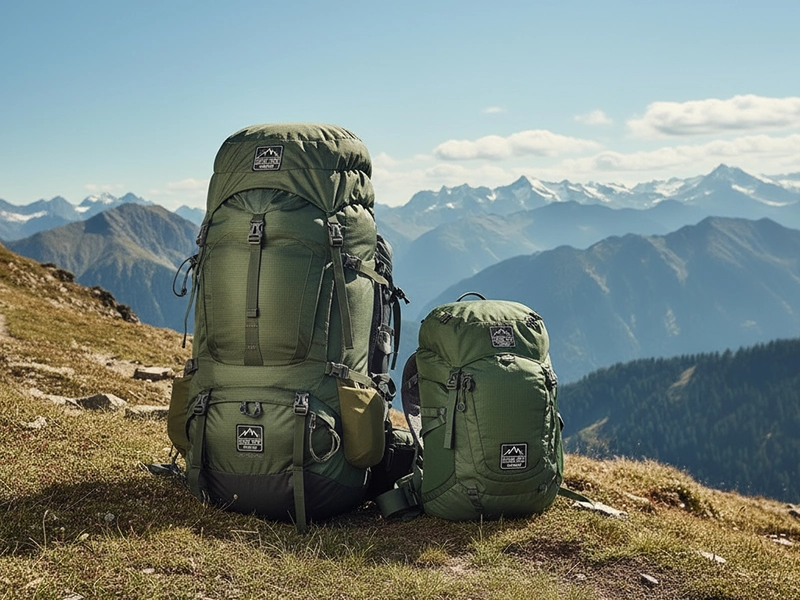
A good backpack is more than just a bag, it’s your lifeline on a Nepal trek. It carries your essentials, keeps your gear organized, and affects your comfort and endurance on long hiking days. Alongside a main backpack, a smaller daypack is equally important for daily essentials while exploring trails or visiting teahouses.
Choosing the Right Main Backpack
- Capacity: For most Nepal treks, a 50-65L backpack is ideal. Smaller packs may not hold all your essentials for multi-day treks, while larger packs can be unnecessarily heavy.
- Fit & Comfort: Look for padded shoulder straps, a supportive hip belt, and adjustable torso length. A well-fitted pack distributes weight evenly, preventing back and shoulder pain.
- Material & Durability: Water-resistant, ripstop fabrics are preferred. Many backpacks come with reinforced zippers and compartments for durability on rugged trails.
- Features: Multiple compartments, external pockets, and hydration bladder compatibility add convenience and organization.
The Daypack
- A 20 – 30L daypack is perfect for carrying water, snacks, camera, jacket, and trekking essentials during the day.
- Useful for shorter hikes or when your main backpack is stored at a teahouse.
- Should be lightweight, adjustable, and have comfortable straps.
Additional Tips for Packing
- Waterproof Cover: Always carry a rain cover to protect your gear during sudden downpours.
- Pack Smart: Place heavier items close to your back and lighter items outward to maintain balance.
- Accessibility: Keep frequently used items like water, snacks, or trekking poles in easy-to-reach pockets.
Managing Weight
- Aim to keep your main pack under 12–15 kg for comfort on long treks.
- Prioritize essentials; unnecessary items can slow you down and strain your back.
- Consider hiring porters on longer treks, they can carry your main pack while you use a lighter daypack.
With the right backpack and daypack combination, your trek becomes more organized, comfortable, and enjoyable. Proper gear management ensures you can focus on the breathtaking landscapes of Nepal instead of dealing with sore shoulders or unbalanced loads. A well-packed bag is your first step toward a smoother Himalayan adventure.
6. Hydration & Water Purification
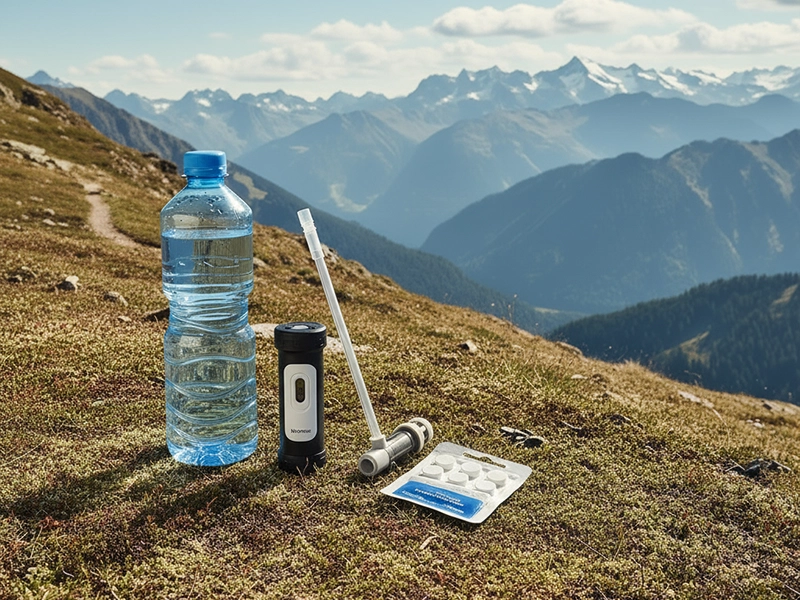
Staying properly hydrated is one of the most critical aspects of trekking in Nepal, especially at higher altitudes. The combination of physical exertion, dry mountain air, and limited access to safe drinking water makes hydration essential for your energy, health, and overall trekking experience. Carrying water is important, but ensuring it’s clean and safe is equally crucial.
How Much Water to Carry
- Aim for 2-3 liters per day, depending on your trek difficulty and altitude.
- High-altitude treks often require more water due to faster dehydration from cold, dry air and increased breathing rate.
- Use hydration bladders or bottles for easy sipping on the move.
Water Purification Methods
Even tap or spring water along trekking trails can carry bacteria and parasites. Reliable water purification ensures safety:
- Water Purification Tablets: Lightweight and effective; tablets with chlorine dioxide are widely used.
- Portable Water Filters: Compact filters remove bacteria and sediment, allowing you to refill from streams or taps.
- UV Sterilizers: Battery-powered devices that kill pathogens in minutes; great for trekkers who prefer chemical-free methods.
Practical Tips for Hydration
- Refill Regularly: Don’t wait until you’re thirsty, sip small amounts frequently.
- Boil Water (if possible): Boiling for 5-10 minutes is a traditional, effective method to kill bacteria.
- Avoid Unsealed Bottled Water: While convenient, single-use plastic bottles contribute to pollution along trekking trails. Consider a reusable bottle instead.
Accessories & Convenience
- Insulated water bottles or hydration bladders help prevent freezing on cold treks.
- Collapsible bottles or pouches save space in your backpack when not in use.
- Label bottles to avoid mix-ups with other trekkers’ water.
Proper hydration is not just about quenching thirst, it prevents altitude sickness, boosts energy, and keeps you alert on challenging trails. Combining smart water-carrying strategies with reliable purification methods ensures you can enjoy your trek confidently, knowing your body is fueled and protected against waterborne illnesses.
7. First Aid Kit & Personal Medication

Trekking in Nepal exposes you to rugged trails, unpredictable weather, and high altitudes. While safety measures and guides help, carrying a personal first aid kit is non-negotiable. Being prepared for minor injuries, altitude sickness, or common trekking ailments can make a huge difference in your comfort and safety.
Core Items for Your First Aid Kit
- Bandages & Dressings: For cuts, scrapes, or blisters. Include adhesive bandages in various sizes and sterile gauze.
- Antiseptic & Ointments: Prevent infections from minor injuries with antiseptic wipes, creams, or sprays.
- Pain Relief: Tablets for headaches, muscle aches, or general discomfort.
- Blister Treatment: Moleskin or blister pads for preventing painful foot issues during long hikes.
- Digestive Remedies: Anti-diarrheal tablets, oral rehydration salts, and antacids for stomach upsets.
High-Altitude & Trekking-Specific Medications
- Altitude Sickness Medication (e.g., Diamox): Consult a doctor before using. Can help reduce symptoms like headaches, nausea, and dizziness at high elevations.
- Anti-inflammatory or Cold Medication: Useful for managing minor colds, sore throats, or joint pain.
- Prescription Medications: Always carry your regular medications, along with copies of prescriptions in case of emergencies.
Additional Essentials
- Tweezers, scissors, and safety pins for emergencies.
- Thermometer to monitor fever.
- Electrolyte powders to maintain hydration on strenuous days.
- Insect repellent and sunscreen for protection against bites and sunburn.
Packing & Usage Tips
- Store medications in a waterproof pouch to protect against rain and moisture.
- Familiarize yourself with proper dosages and usage before the trek.
- Inform your trekking partner or guide about any pre-existing medical conditions.
A well-prepared first aid kit is more than just a precaution, it’s peace of mind. Minor injuries or illnesses are common on Himalayan trails, and having the right supplies allows you to manage them immediately, preventing discomfort from escalating. When combined with a cautious approach, your kit ensures that health issues don’t overshadow the breathtaking experiences that Nepal trekking offers.
8. Headlamp & Extra Batteries

When trekking in Nepal, daylight hours can be limited, and teahouses or high-altitude camps may have irregular electricity. A reliable headlamp is more than a convenience – it’s an essential safety tool that allows you to navigate trails, find your way in dimly lit areas, and manage emergencies at night.
Why a Headlamp is Crucial
- Hands-Free Lighting: Unlike a flashlight, a headlamp frees your hands for trekking poles, handling gear, or preparing your sleeping area.
- Early Morning or Late Evening Hikes: Some high-altitude treks require starting before sunrise to avoid snow melting or to catch clear weather.
- Unexpected Power Outages: Remote lodges or teahouses often have limited electricity; a headlamp ensures you’re never left in the dark.
Choosing the Right Headlamp
- Brightness (Lumens): For trekking, a headlamp with 150-300 lumens is sufficient for most trails. Higher lumens are useful for technical climbs or extremely dark paths.
- Beam Modes: Adjustable brightness levels, strobe, and red light mode are useful for preserving night vision.
- Weight & Comfort: Lightweight models with adjustable straps are ideal for long-term wear.
- Water Resistance: A waterproof or water-resistant headlamp ensures functionality during rain or snow.
Extra Batteries & Backup Options
- Always carry spare batteries, even if your headlamp is rechargeable. Cold temperatures can drain battery life faster.
- Consider a small portable power bank to recharge your headlamp or other devices on the go.
- Keep batteries in a waterproof pouch to prevent moisture damage.
Tips for Efficient Use
- Test your headlamp before the trek to familiarize yourself with settings.
- Use lower brightness for indoor use at teahouses to conserve battery life.
- Switch to red light mode when needed, ideal for reading maps or preserving night vision.
A high-quality headlamp ensures that darkness never slows you down. Whether it’s navigating narrow mountain paths, setting up your tent, or simply reading in a dim teahouse, this small but powerful tool is an indispensable companion for every Nepal trekker. With extra batteries and a backup plan, you can trek confidently, knowing that light will always be within reach.
9. Snacks & Energy Boosters

Trekking in Nepal can be physically demanding, with long days of walking through steep trails, high altitudes, and changing weather. To keep your energy levels stable and prevent fatigue, carrying the right snacks and energy boosters is essential. These quick-fuel items help you stay energized, hydrated, and focused on the trail.
Types of Snacks to Carry
- Nuts & Seeds: Almonds, cashews, peanuts, and sunflower seeds are calorie-dense, nutritious, and easy to pack.
- Energy Bars & Protein Bars: Compact, convenient, and designed to provide long-lasting energy during treks.
- Dried Fruits: Apricots, raisins, dates, and mango slices give natural sugars for a quick energy boost.
- Chocolate & Dark Chocolate: Provides both sugar and a mood lift, great for high-altitude treks when fatigue sets in.
Hydration-Compatible Snacks
- Electrolyte Powders or Tablets: Replenish lost salts and minerals, especially during hot days or strenuous climbs.
- Trail Mix: A combination of nuts, dried fruits, and chocolate gives both energy and hydration support.
Packing & Convenience Tips
- Lightweight & Non-Perishable: Choose snacks that don’t spoil easily and are easy to carry in your daypack.
- Portion Control: Pre-pack small portions for quick access during short breaks.
- Easy Access: Keep snacks in an accessible pocket of your daypack so you can refuel without stopping frequently.
Additional Tips
- Avoid heavy, greasy, or overly processed foods that may upset your stomach.
- Rotate snacks throughout the day to maintain consistent energy levels rather than consuming a large amount at once.
- Experiment with snacks during training hikes before your trek to see what works best for your body.
Having the right snacks on hand can be a game-changer during long trekking days. They keep your energy steady, help your body adapt to high altitudes, and make trekking more enjoyable. With well-planned snacks and energy boosters, you’ll stay fueled for every breathtaking view, challenging ascent, and rewarding descent on your Nepal adventure.
10. Travel Documents & Permits
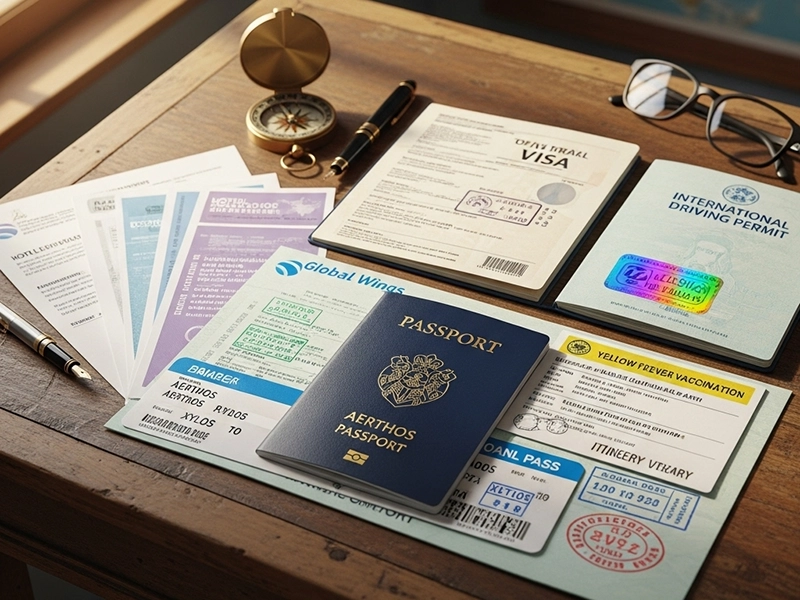
While gear and snacks are vital for a successful trek, travel documents and permits are equally important. Trekking in Nepal is regulated, and without the proper paperwork, you may be denied entry to national parks, conservation areas, or even certain trekking routes. Staying organized with your documents ensures a smooth and hassle-free experience.
Key Documents to Carry
- Passport: Valid for at least six months beyond your travel date.
- Visa: Most international travelers require a Nepal tourist visa, obtainable online or on arrival at Tribhuvan International Airport.
- Travel Insurance: Must cover high-altitude trekking and emergency evacuation. Keep a copy in digital and printed form.
- Permits: Depending on your trek, you may need multiple permits:
- TIMS Card (Trekkers’ Information Management System): Required for most trekking regions.
- National Park or Conservation Area Permits: For example, Sagarmatha National Park (Everest), Annapurna Conservation Area, Langtang National Park, etc.
Tips for Managing Documents
- Carry Originals and Copies: Keep a digital copy on your phone or cloud storage as a backup.
- Organize in a Waterproof Folder: Protects documents from rain, snow, and accidental spills.
- Check Permit Requirements in Advance: Rules can change based on the trekking region or season. Booking permits through a trekking agency can simplify the process.
Additional Tips for Smooth Travel
- Keep emergency contact numbers handy, including your embassy or consulate.
- Note down your trekking guide or agency’s contact information.
- Make a checklist of documents before leaving for the trek to avoid last-minute stress.
Having all the necessary travel documents and permits is crucial not just for compliance but also for peace of mind. With paperwork in order, you can focus on enjoying the spectacular landscapes, vibrant culture, and exhilarating adventure that Nepal offers without worrying about administrative hurdles. Think of these documents as your key to unlocking the Himalayan experience safely and smoothly.
Additional Handy Items & Practical Tips
Beyond the top 10 essentials, there are several additional items and practical tips that can make your Nepal trekking experience more comfortable, safe, and enjoyable. While not strictly mandatory, these extras often prove invaluable on the trail.
Handy Items to Consider
- Sunglasses & Sunscreen: High altitudes increase UV exposure. Polarized sunglasses protect your eyes from glare and snow blindness, while SPF 30+ sunscreen shields your skin from sunburn.
- Portable Power Bank/Solar Charger: Electricity is limited in teahouses, and power cuts are common. A power bank ensures your devices, headlamp, or GPS stay functional.
- Trekking Map / Guidebook or Offline Maps: Navigation tools are helpful, especially in remote regions. Offline GPS apps can serve as a backup when mobile signals are weak.
- Lightweight Sandals or Flip-Flops: Useful for relaxing at teahouses or letting your feet breathe after a long day of hiking.
- Camera or Smartphone with Extra Memory Cards: Capture the stunning Himalayan landscapes and memories without worrying about storage space.
- Dry Bags & Waterproof Pouches: Protect electronics, documents, and clothing from rain or snow.
Practical Trekking Tips
- Pack Light, Trek Light: Avoid overpacking to reduce strain. Stick to essentials and multi-purpose items.
- Layer Wisely: Adjust layers frequently according to temperature and altitude changes.
- Stay Hydrated and Snack Smart: Frequent small sips and energy snacks maintain stamina.
- Acclimatize Properly: Take rest days or gradual climbs to prevent altitude sickness.
- Respect Local Customs: Learn basic Nepali greetings, dress modestly, and follow conservation rules in national parks.
Extra Tips for Convenience
- Label your belongings to avoid confusion in teahouses.
- Carry a small laundry kit or quick-dry clothes to manage hygiene on long treks.
- Always check the weather forecast daily to adjust your clothing and gear.
Including these handy items and practical strategies ensures your trek is not only safer but also more enjoyable. By preparing thoughtfully, you can focus on the beauty of Nepal’s landscapes, immerse yourself in local culture, and make the most of every step on the Himalayan trails.
Conclusion
Trekking in Nepal is a life-changing adventure, offering breathtaking landscapes, vibrant culture, and unforgettable experiences. But as thrilling as the journey is, it demands preparation. From sturdy trekking boots to travel documents and permits, each essential plays a crucial role in ensuring your safety, comfort, and enjoyment on the trail.
By following this guide and packing wisely, you’ll be ready to tackle unpredictable weather, rugged terrain, and high-altitude challenges. Remember, trekking isn’t just about reaching the summit, it’s about enjoying every step of the journey, soaking in the natural beauty, and embracing the local culture.
Whether you’re a first-time trekker or an experienced adventurer planning a 2025 or 2026 expedition, having the right gear, snacks, hydration, and permits ensures that nothing stands in the way of your Himalayan adventure. Pack smart, trek light, and let Nepal’s mountains create memories that last a lifetime.
Your trek starts not with your first step on the trail, but with thoughtful preparation and now, with this checklist of top 10 essentials, you’re fully equipped to make your Himalayan journey safe, enjoyable, and unforgettable.
